Plastic Bottle Solar Collector: A Step-by-Step Guide to Helio Assembly
The concept of alternative energy for many owners of private houses and cottages is associated with expensive solar panels, windmills or heat pumps. No one even realizes that in just a few hours you can build a solar collector out of plastic bottles for mere pennies in order to supply yourself with hot water throughout the warm season.
We will tell you how to make an effective system for the preparation of sanitary water from waste materials. In our article, you will find a detailed description of the designs and methods of manufacturing systems whose operation has been tested in practice. Based on our recommendations, you can easily assemble a device that is useful in the household.
The content of the article:
The specifics of the use of solar collectors
The main difference between the solar collector and the various types of heat generating solar systems consists in the cyclical nature of the work. In other words, in the absence of the sun there will be no thermal energy.
Obviously, in the dark, the performance of an autonomous hot water supply with a solar collector is reduced to zero. Heat production by the solar collector is determined by the length of daylight, which depends on the geographical latitude and time of the year.
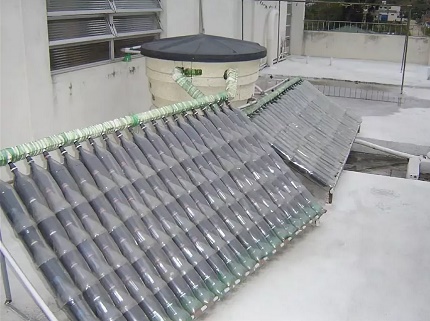
The climatic features of the area also have a significant impact on the level of productivity of the solar collector. If the area is characterized by frequent fogs or the sun often hides behind the clouds, then the performance of the solar collector is significantly reduced.
However, in this case too solar collector for heating and / or water heating remains effective due to the ability to capture even scattered rays.
Design features and principle of operation
The main element of the standard version of the solar collector is an adsorber in the form of a copper plate with a tube. The plate quickly heats up under the influence of sunlight, transferring heat to the tube and the liquid in it. Due to free or forced circulation, the heat received is then transported throughout the system.
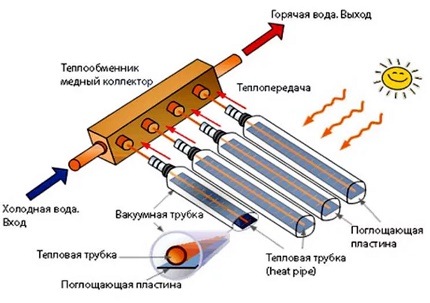
To increase the efficiency of the adsorber should be endowed with the necessary physical properties. First of all, it is necessary to increase the absorption capacity of the adsorber and to minimize the reflection of sunlight. The simplest solution is to apply black ink to the adsorber.
To increase the efficiency of the adsorber, it must be covered with transparent glass. Ordinary glass reflects part of the sun's rays.
It is best to use special glass with a low iron content or use anti-reflective coating. To avoid contamination of the glass, the case of the solar collector should be sealed.
Despite the many ways to improve performance and increase the productivity of the solar collector, nevertheless, due to imperfections in the design, this indicator is far from ideal. Given the principle of the solar collector and methods for increasing its efficiency, we will try to create a primitive and inexpensive model from improvised materials.
Assembly of the unit from improvised materials
In addition to low cost and ease of assembly, the option of plastic bottles differs from standard solar systems in that flat solar collectors do not work well in the morning and evening hours.
The convex shape of the bottles ensures almost vertical penetration of rays even during sunset and dawn, thereby ensuring the efficiency of the device, both in the morning and in the evening.
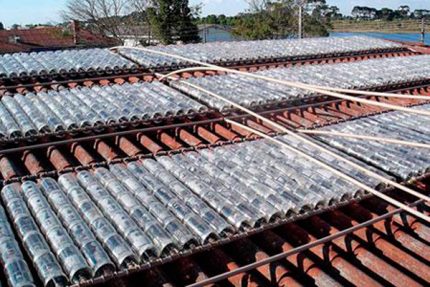
There are several distinctive ways to build a perfectly working system for producing hot water from plastic bottles:
- The solar collector plays the role of a storage tank, in which water is heated and then drained;
- The solar collector is connected to the storage tank to ensure water heating and its natural circulation;
- Plastic bottles of the collector act as a reservoir for water;
- Plastic bottles play the role of sealed containers to retain heat.
Also, solar collectors can vary in their design features. First of all, this is due both to the method of fastening the bottles and the ways of their location.
The option with the accumulation of heated water
To make a solar collector, you will need polypropylene pipe with a diameter of 50 mm, to which plastic bottles will be connected, the number of which is determined by the diameter of the pipe. For the template, 15 plastic bottles were taken, so the working capacity of the solar collector was 30 liters.
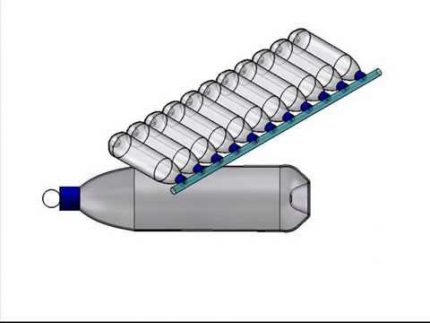
To connect the bottles into a single system in a propylene pipe designed for hot water, it is necessary to drill holes. The ideal solution was to use a drill bit on wood with a diameter of 26 mm.
With such dimensions, the maximum density of the connection is ensured, and the bottle is screwed into the hole with its own thread. To ensure maximum sealing of the joint, the joints can be coated with silicone sealant, but it is better to use hot melt adhesive.
To achieve the effect of communicating vessels in the upper part of each bottle, it is necessary to make holes with a diameter of about 2 mm.
After connecting the bottles, a fitting is cut into one side of the pipe, which will later be connected to the water supply for supplying water. On the other hand, a tap should be inserted through which heated water will merge into the storage tank.
However, under the weight of the filled water, such a device for domestic use solar power may lose its integrity. Therefore, it will be appropriate device box. To make it, you need a board with a width of 150 mm.
To increase the efficiency of the solar collector, at the bottom of the box, you can lay polystyrene or expanded polystyrene 50 mm thick and cover with foil.
After installing the solar collector in the place of its further operation, the plastic bottles must be painted black for more efficient absorption of sunlight.
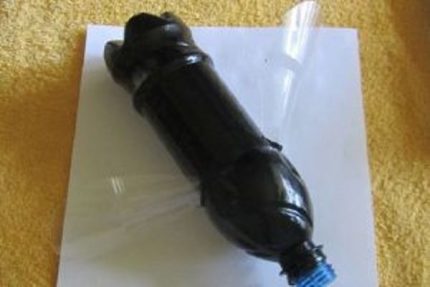
It is better to use matte paint and apply by spraying from an aerosol can. It remains to cover the box with glass, thereby increasing its tightness and connecting it to the cold water supply system and the drain system of the warm water prepared for use in the storage tank.
From practical experience it is known that plastic does not tolerate the effects of high temperatures, which lead to its deformation. On bright sunny days, the temperature of the heated water can exceed 65 degrees, which will lead to plastic deformation.
In this regard, it is better to refuse additional sealing of the box with glass in general or use it exclusively in cloudy weather.
Method with circulation of heated water
The system of the solar collector is similar to the first option, but has a number of structural differences.
To create a collector, the following tools and materials will be required:
- PVC pipe with a diameter of 20 mm with corners and tees;
- Roller pipe cutter;
- Chisel cutters;
- Primer (cleaning agent);
- Plastic bottles;
- Tetrapaki made from milk or juice;
- Stationery knife;
- Cardboard;
- Heat-resistant matte black paint;
- Storage tank.
For installation, we need a PVC pipe with a diameter of 20 mm. The horizontal part of the pipe should be cut into pieces into which corners and tees will be attached by cold welding. The bottom of the solar collector will look exactly the same. In the end result, we get a closed system, but first things first.
Features of gluing PVC pipes
To get a quality cut it is better to use pipe cutterequipped with casters. After cutting, it is necessary to chamfer the inside of the pipe using special chamfering tools.
After measuring the depth of the tees and angles, you need to set a mark on the end of the pipe to be connected and treat the pipe ends and fittings with a primer (cleaning agent).
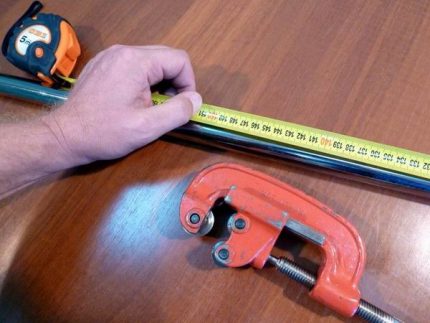
The next step will be the application and distribution of glue on the outside of the pipe and the inside of the fitting. Glue must be applied with a brush, while its size should be less than the diameter of the pipes. It remains to insert the pipe into the prepared tee or corner and turn it a quarter of a turn for even distribution of glue.
Please note that gluing one corner or tee should not take longer than 30 seconds. After fixing it is necessary to remove the remains of glue.
Solar collector manufacturing procedure
After preparing the upper pipe and attaching the vertical pipes to it, you can begin to prepare plastic bottles. In the presented model of the solar collector, there are 4 vertical pipes 105 cm long, 5 plastic bottles can be placed on this length of the pipe.That is, to collect the collector you will need 20 identical plastic bottles.
From each bottle you need to remove the bottom. To do this, you should make a simple template from a 30 cm long piece of cardboard rolled into a tube. Using a template and a stationery knife, remove the bottom on the bottles. After preparing the bottles, you can begin to manufacture an absorber that will absorb solar energy.
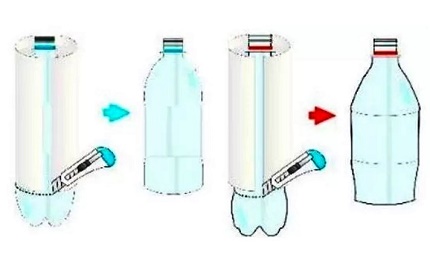
In the role of an absorber, we use used tetrapacks from juice or milk. They must be cut, thoroughly washed and dried. To improve their absorbency, black matte paint should be applied. The easiest way to do this is by spray paint.
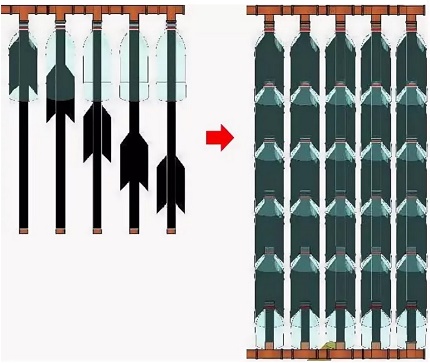
After preparing the bottles and tetrapacks, you can start assembling the solar device. First, on a vertical tube you need to string a plastic bottle with its neck forward and insert a tetrapack into it. Similarly, all bottles are strung on vertical tubes, which then need to be connected to tees and corners of the lower pipe, similar to the upper.
To give rigidity to the manufactured solar collector, it is necessary to make a support for it.
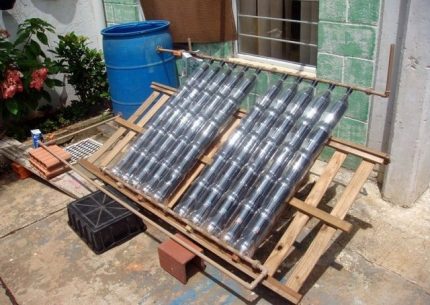
It is possible, as in the first case, to place the collector in a wooden box, but it is no longer necessary to insulate it. Since each of the plastic bottles is a kind of small insulated tank, which, warming up from the inside, transfers heat to the water circulating through the pipes.
Features of placement and connection
For the maximum possible absorption of sunlight, the collector must be oriented in a southerly direction. A small angle of inclination of 10-15 degrees is enough for the collector to work effectively in almost any location of the sun.
The lower part of the pipe must be connected to the lower part of the storage tank, and the upper - approximately, to its central part. Cold water from the polymer tank will flow through the lower pipe into the collector, where it will heat up and rise through the upper pipe into the tank.
Thus, the natural circulation of water through a home-made system will be carried out. To ensure a high intensity of water circulation, the tank should be placed just above the solar collector at a distance of at least 0.3 m from it.
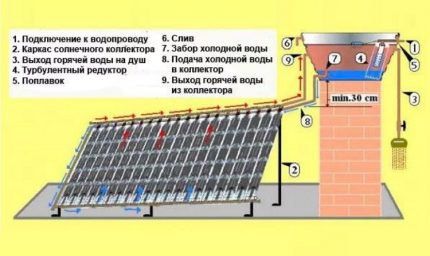
It should be noted that when cold water enters the tank from the water supply system, it is actively mixed, which reduces the efficiency of the collector. This can be avoided by equipping the input to the tank with a turbulent gearbox, which is a plugged tube with multiple holes.
Water flows smoothly through the gearbox, which allows cold water to remain in the lower layers, from where it is drawn into the solar collector.
It is obvious that the solar collector provides heating of water only in the daytime in sunny weather. Therefore, it is important to keep hot water for use day and night. To do this, it is necessary to warm the storage capacity.
Conclusions and useful video on the topic
Video 1. So the first helio-systems from plastic bottles appeared:
Video 2. Almost free device for heating water in action:
A plastic plastic solar collector for drinks is a cheap solution for producing hot water.However, in case of prolonged inclement weather, especially in spring and autumn, it is advisable to install a heater in the storage tank. In this case, the solar collector will become part of a complete system, which, under favorable conditions, will save money.
Tell us about your experience in building a homemade solar system from plastic bottles. It is possible that your arsenal contains information and design options that may be useful to site visitors. Please write comments in the block form below, ask questions, share photos and useful information.

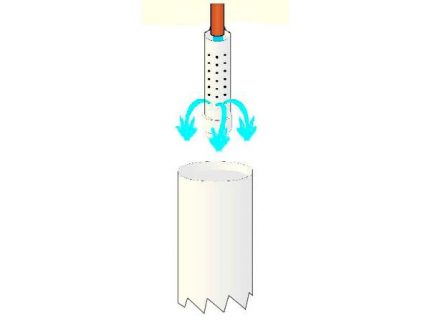
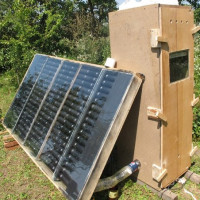 How to make a solar collector for DIY heating: a step-by-step guide
How to make a solar collector for DIY heating: a step-by-step guide  Vacuum solar collector: principle of operation + how to assemble yourself
Vacuum solar collector: principle of operation + how to assemble yourself 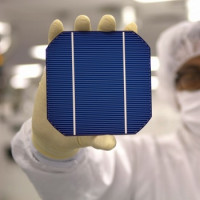 How to make a solar battery with your own hands: self-assembly instruction
How to make a solar battery with your own hands: self-assembly instruction 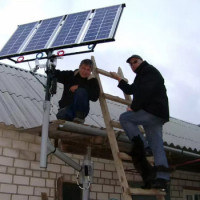 DIY solar generator: instructions for making an alternative energy source
DIY solar generator: instructions for making an alternative energy source  Solar heating systems: analysis of heating technology based on solar systems
Solar heating systems: analysis of heating technology based on solar systems 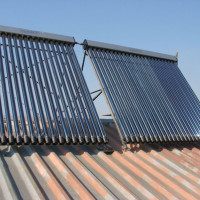 Solar panels for heating a house: types, how to choose and install them correctly
Solar panels for heating a house: types, how to choose and install them correctly  How much does it cost to connect gas to a private house: the price of organizing gas supply
How much does it cost to connect gas to a private house: the price of organizing gas supply  The best washing machines with dryer: model rating and customer tips
The best washing machines with dryer: model rating and customer tips  What is the color temperature of light and the nuances of choosing the temperature of the lamps to suit your needs
What is the color temperature of light and the nuances of choosing the temperature of the lamps to suit your needs  Replacement of a geyser in an apartment: replacement paperwork + basic norms and requirements
Replacement of a geyser in an apartment: replacement paperwork + basic norms and requirements
What can I say, the design is interesting and, more importantly, simple as 5 cents. However, unfortunately, its effectiveness in our latitudes is doubtful. Argentina is one thing, where even in winter temperatures below +15 C are found only in certain mountainous regions, the other is Russia, especially the Urals, Siberia, and the Far East with 1.5 months of a short summer. But, nevertheless, my respect for the Argentine engineers.
If I'm wrong, and someone managed to benefit from this design in our country - write, it will be interesting to read.